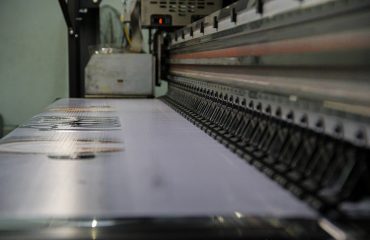The world of steel is undergoing a significant transformation, thanks to the advent of nanotechnology. No longer limited by traditional methods, steel surface treatments are now benefiting from the unique properties of nanomaterials, leading to enhanced performance, durability, and functionality. This post delves into the fascinating world of nanotech in steel surface treatments, exploring its various applications and the exciting possibilities it holds for the future.
1. Enhancing Steel Durability with Nanocoatings
One of the most significant applications of nanotechnology in steel surface treatment is the development of advanced nanocoatings. These coatings, typically composed of nanoparticles of materials like titanium dioxide (TiO2), zinc oxide (ZnO), or silicon dioxide (SiO2), offer superior protection against corrosion, wear, and abrasion. The small size of the nanoparticles allows for a denser, more uniform coating, significantly improving adhesion and reducing porosity compared to traditional coatings. This results in enhanced barrier properties, preventing the ingress of corrosive agents like oxygen and moisture. Furthermore, some nanocoatings exhibit self-healing properties, where microscopic cracks in the coating can automatically seal themselves, prolonging the lifespan of the treated steel.
Specific examples include nano-ceramic coatings that provide exceptional hardness and scratch resistance, making them ideal for applications in high-wear environments. Similarly, nano-structured coatings incorporating corrosion inhibitors can significantly extend the service life of steel components in harsh conditions, such as marine environments or chemical processing plants. The application methods for these nanocoatings are diverse, ranging from dip coating and spray coating to more sophisticated techniques like atomic layer deposition (ALD) and chemical vapor deposition (CVD), allowing for tailored coating thicknesses and functionalities.
2. Improving Steel’s Anti-Microbial Properties with Nanomaterials
The incorporation of nanomaterials with antimicrobial properties into steel surface treatments is gaining traction, particularly in sectors like healthcare and food processing. Nanoparticles of silver (Ag), copper (Cu), or zinc oxide (ZnO) are known for their potent antibacterial and antifungal effects. These nanoparticles can be integrated into nanocoatings or directly embedded into the steel surface through various techniques like ion implantation or laser surface modification. The resulting steel surface exhibits inherent antimicrobial properties, reducing the risk of bacterial contamination and promoting hygiene.
This is particularly beneficial in applications where hygiene is paramount, such as hospital equipment, food preparation surfaces, and water treatment facilities. The antimicrobial effect is often attributed to the nanoparticles’ ability to disrupt bacterial cell membranes or interfere with their metabolic processes. Research is ongoing to optimize the efficacy and long-term stability of these antimicrobial nanocoatings, ensuring consistent performance and minimizing potential environmental concerns.
3. Enhancing Steel’s Surface Functionality with Nanotextures
Beyond coatings, nanotechnology offers the ability to modify the surface texture of steel at the nanoscale. This involves creating intricate nano-patterns or textures on the steel surface to enhance its functionality. For instance, superhydrophobic surfaces can be created by incorporating nanostructures that mimic the structure of lotus leaves, leading to self-cleaning properties. This is highly beneficial in applications where dirt and grime accumulation is a concern, like building facades or automotive parts.
Conversely, nanotexturing can also enhance the surface’s adhesion properties, making it ideal for bonding with other materials. This is crucial in applications like composite materials manufacturing, where strong interfacial bonding between the steel and other components is essential for overall performance. Techniques like nanoimprint lithography and femtosecond laser ablation are used to create these precise nanotextures, offering a high degree of control over the surface morphology.
4. The Role of Nanotechnology in Steel Corrosion Resistance
Corrosion is a major concern for steel structures, leading to significant economic losses and safety hazards. Nanotechnology offers innovative solutions to mitigate corrosion by creating highly protective barriers. Nanocoatings, as previously discussed, play a crucial role. However, nanotechnology also enables the development of novel corrosion inhibitors. These inhibitors, often based on nanoparticles or nanocomposites, can be incorporated into coatings or directly applied to the steel surface. They work by forming a protective layer on the steel surface, preventing the contact of corrosive agents with the base metal.
Furthermore, nanotechnology facilitates the development of self-healing coatings, where microscopic cracks in the coating can automatically seal themselves, preventing corrosion propagation. This self-healing capability is achieved by incorporating microcapsules containing corrosion inhibitors that release their contents upon crack formation. The resulting enhanced corrosion resistance significantly extends the lifespan of steel structures, reducing maintenance costs and improving safety.
5. Future Trends and Challenges in Nano-Steel Surface Treatments
The field of nanotechnology in steel surface treatments is rapidly evolving, with numerous exciting developments on the horizon. Research is focused on developing even more durable, efficient, and environmentally friendly nanocoatings and surface treatments. This includes exploring novel nanomaterials with enhanced properties and developing more sustainable and scalable manufacturing processes. The integration of artificial intelligence and machine learning is also expected to play a significant role in optimizing the design and application of nano-steel surface treatments.
However, challenges remain. The cost of producing some nanomaterials can be high, limiting their widespread adoption. Furthermore, the long-term environmental impact of some nanomaterials needs to be thoroughly investigated and addressed. Addressing these challenges will be crucial for realizing the full potential of nanotechnology in revolutionizing steel surface treatments and ensuring its sustainable development.
Tags: nanotechnology, steel surface treatment, nanocoatings, corrosion resistance, antimicrobial steel, nanomaterials, nano textures




